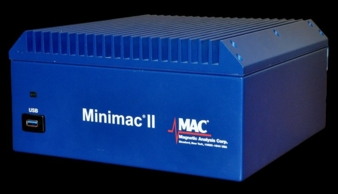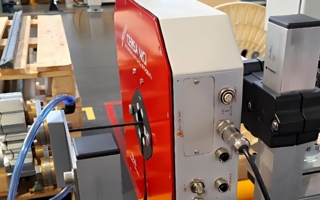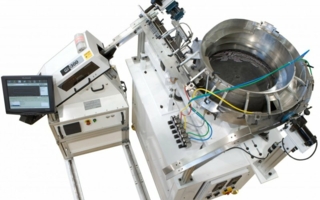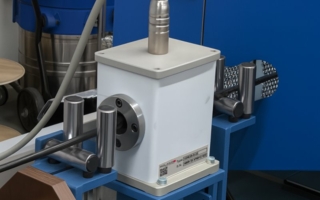05/04/2024 – Quality management
Test systems for the wire and cable industry
Magnetic Analysis Corp. will be featuring the “Minimac II” at its booth which is to find in the tube section. Wire producers are invited to come over to see products that are applicable to both wire and tube.
This latest addition to MAC’s range of eddy current test instruments for detecting surface and sub-surface defects such as laps, slivers and cracks in non-ferrous and ferrous wire and rod, features an embedded processor host computer, and can be supplied with one or two test channels. The “Minimac”s versatility lends itself well to being used in a broad range of applications in wire and rod mills during production.
Typical applications for the newly released “Minimac II” eddy current tester include testing continuous cast small diameter copper rod, installed just before the coiler, but after the rod is produced and drawn down to smaller diameters. The tester can assess grade, using MAC’s Grading Software to automatically categorize the quality level of individual segments and entire coils of wire and rod, during production. The customer can customize the defect types, each based on a specific threshold gate, specify the maximum number of defects for each grade level, and configure categorized reports. Based on the report, the producer can draw down higher graded wire to even smaller diameters. Lower grades are not drawn down as much to avoid problems with breakage in the wire which could end up causing disruptive downtime to re-thread the drawing machine. A Magnetic Inclusion Detector (MID), operating in combination with the flaw detectors, can detect magnetic inclusions, often introduced by steel wire brushes during processing.
In another application, a Minimac II can be installed in a wire mill as finish inspection of zirconium, copper, and beryllium copper alloys to detect defects including surface flaws in plating and sub-surface anomalies in bonding, and inclusions in multiple layers in wire ranging from 0.033” to 0.25” (0.838mm to 6.35mm) diameter. A noise cancelling test coil and bushings provide improved performance by minimising noise from mechanical vibration in the wire which otherwise might interfere with the test.
“Minimac II” can also be used to inspect continuous copper rod, used as feedstock in the production of wire copper strips. The rods ranging from 0.5mm (0.01968”) to 3.5mm (0.13778”) are tested for external defects such as scratches, dents, and gaps, at speeds running up to 20m/s. Welding wire can also be tested, including flux core wire where missing flux can be detected as well as flaws in the wire itself. Checking continuity and locating welds in single and multi-conductor insulated wire and cable are other applications. MAC Engineers will be present in the booth to advise on these and many other possible ways to use “Minimac II” to solve wire and rod production quality problems. MAC Engineers will be available at the booth to provide comprehensive information on the company’s full range of products, including the “MultiMac” eddy current tester with up to 8 test channels, “Rotomac” eddy current rotaries for detecting long, continuous surface seams, and ultrasonic instruments and systems.
Tube 2024, hall 7a booth F 19
Magnetic Analysis Corp
103 Fairview Park Drive
Elmsford, NY 10523/USA
Contact person is Jean R. Gould
Tel.: +1 914 530-2000
jgould@mac-ndt.com
www.mac-ndt-com




